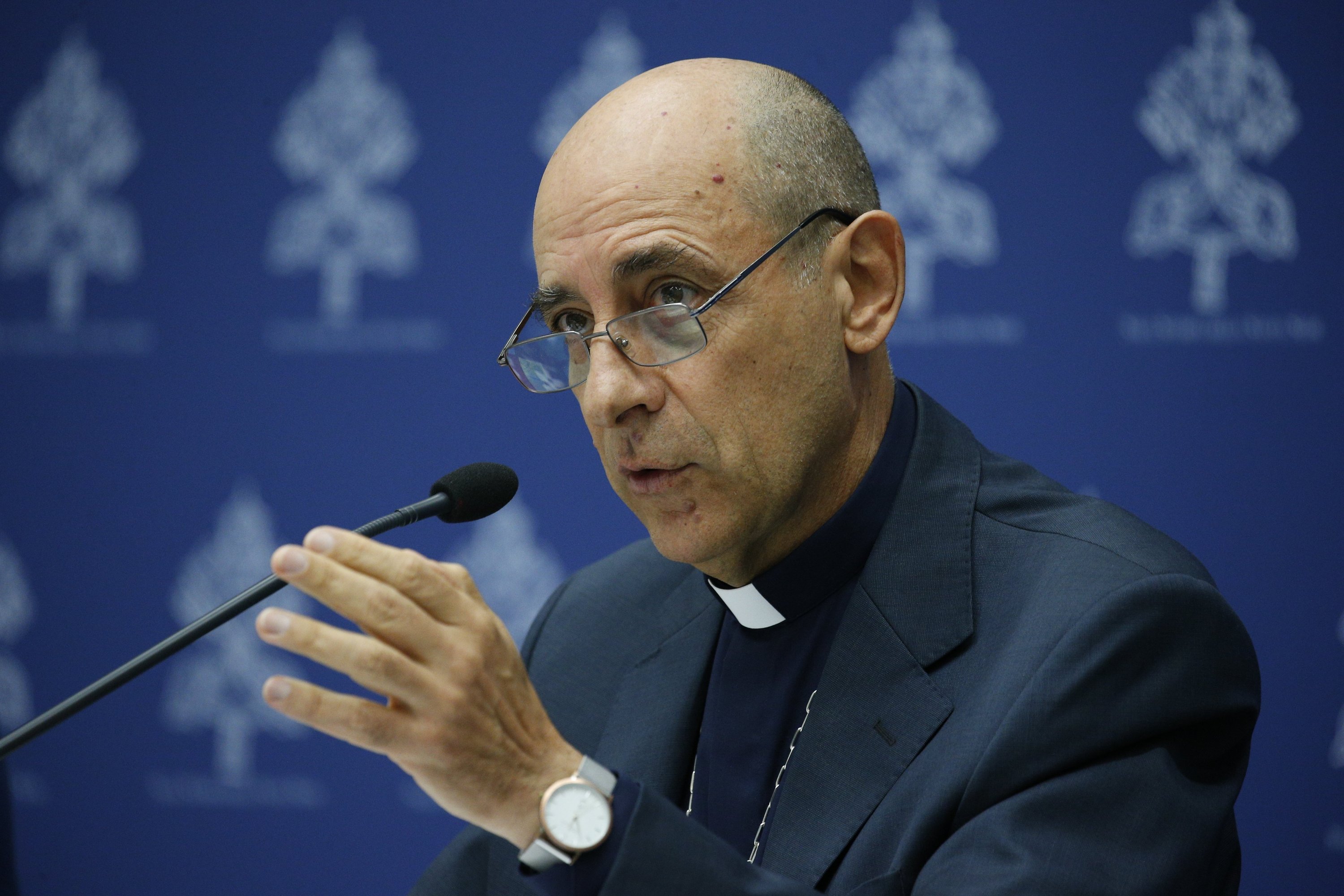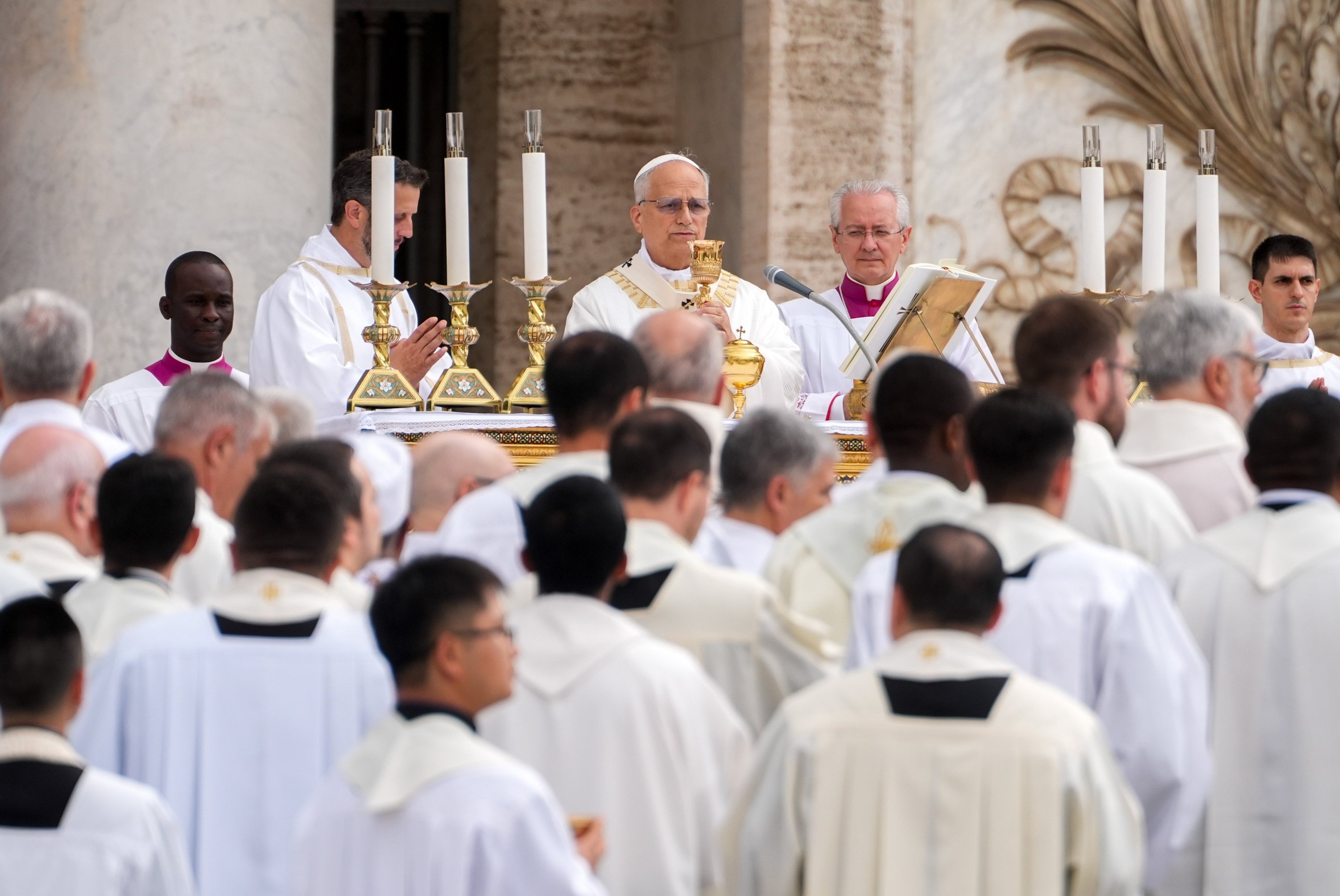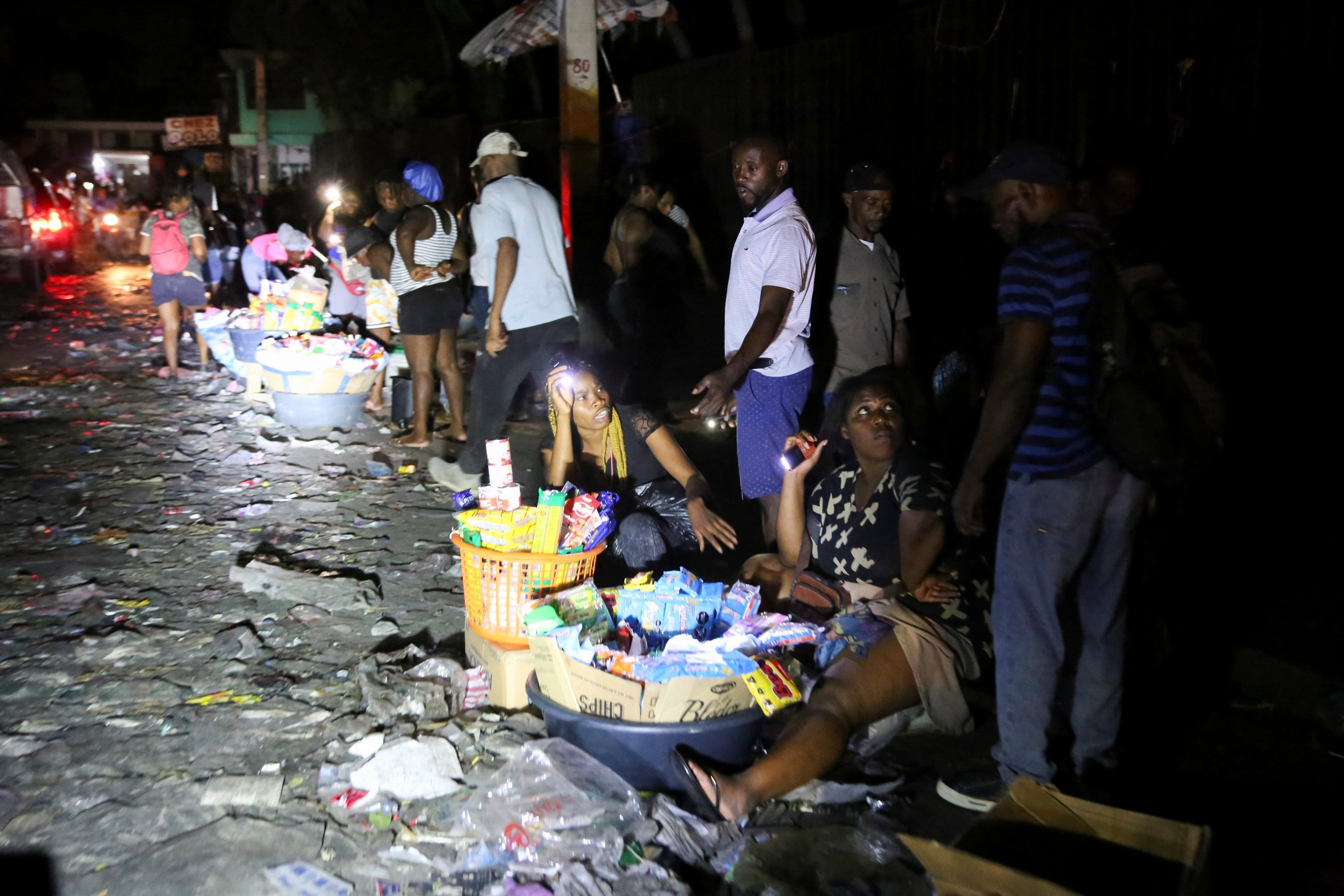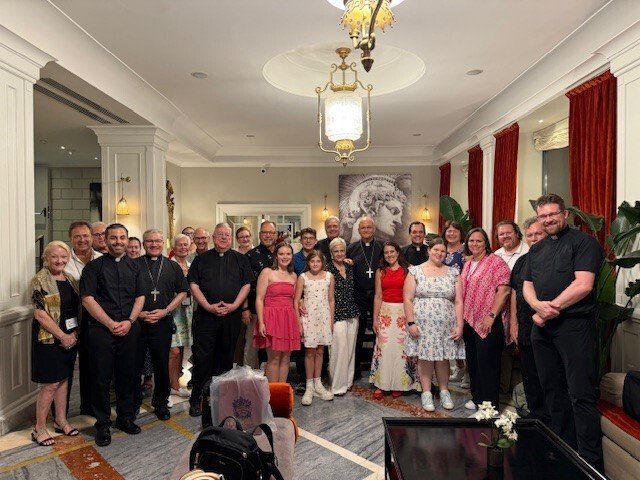Posted on 07/3/2025 15:07 PM (Detroit Catholic)

Posted on 07/3/2025 15:05 PM (Detroit Catholic)

Posted on 07/3/2025 15:04 PM (Detroit Catholic)

Posted on 07/3/2025 14:58 PM (Detroit Catholic)

At the conclusion of a weeklong pilgrimage in Rome, highlighted by Archbishop Edward J. Weisenburger's reception of the pallium from Pope Leo XIV on June 29, pilgrims from the Archdiocese of Detroit and members of Archbishop Weisenburger's family take a group picture to commemorate the experience.
Posted on 07/3/2025 13:45 PM (CNA Daily News)
 Professor Michael McConnell speaks after winning the Notre Dame Prize for Religious Liberty on June 25, 2025. / Credit: Casey Patrick/Notre Dame Law School
Professor Michael McConnell speaks after winning the Notre Dame Prize for Religious Liberty on June 25, 2025. / Credit: Casey Patrick/Notre Dame Law School
Washington, D.C. Newsroom, Jul 3, 2025 / 09:45 am (CNA).
During its recently concluded fifth annual Religious Liberty Summit, Notre Dame Law School recognized two scholars for their contributions to the promotion and protection of religious liberty around the world.
The Notre Dame Prize for Religious Liberty, which is awarded to one person each year for his or her achievements in preserving religious liberty, was presented at last week’s summit to former federal judge and constitutional scholar Professor Michael McConnell of Stanford Law School.
Meanwhile, professor and author Dr. Russell Hittinger of The Catholic University of America (CUA) received the Religious Liberty Scholarship Award, which is given annually to an individual for accomplishments in advancing the understanding of how law protects freedom of religion.

Hittinger is executive director of CUA’s Institute for Human Ecology and a research professor in the School of Philosophy. He has also taught at Princeton, Fordham, and the University of Chicago and has been a member of the Pontifical Academy of Social Sciences and the Pontifical Academy of St. Thomas Aquinas.
“When I look back, things are so much better now… in constitutional law, freedom of religion, we’re doing a whole lot better today than we were before,” McConnell said at the event.
McConnell is director of the Constitutional Law Center at Stanford Law School and teaches courses on constitutional law, constitutional history, the First Amendment, and interpretive theory.
From 2002 to 2009, he served as a circuit judge on the U.S. Court of Appeals for the 10th Circuit. As an author, his most recent work, co-authored with Nathan Chapman, is “Agreeing to Disagree: How the Establishment Clause Protects Religious Diversity and Freedom of Conscience.”
For his part, Hittinger has published more than 100 articles and books, including “Political Pluralism and Religious Liberty: The Teaching of Dignitatis Humanae” and his 2024 book “On the Dignity of Society: Catholic Social Teaching and Natural Law.”
Posted on 07/3/2025 13:15 PM (CNA Daily News)
 The Confiteor at a Traditional Latin Mass. / Credit: James Bradley, CC BY 2.0, via Wikimedia Commons
The Confiteor at a Traditional Latin Mass. / Credit: James Bradley, CC BY 2.0, via Wikimedia Commons
Vatican City, Jul 3, 2025 / 09:15 am (CNA).
A Vatican spokesman has played down the significance of recently leaked Vatican documents that appear to cast doubt on Pope Francis’ rationale for restricting the Latin Mass, calling the documents “partial and incomplete.”
The documents appear to show that bishops had a more favorable outlook on the Traditional Latin Mass than Pope Francis suggested when he issued controversial restrictions on its celebration in 2021.
Vatican journalist Diane Montagna published two excerpts from an internal Vatican report on a global consultation of bishops in a Substack newsletter July 1. The publication of the texts has sparked renewed controversy over Francis’ decision to restrict the celebration of the Traditional Latin Mass at a time when some liturgical traditionalists are voicing hopes that Pope Leo will reverse or moderate his predecessor’s action.
Matteo Bruni, director of the Holy See Press Office, said July 3 the leaked information “presumably concerns part of one of the documents on which the decision [to restrict the Latin Mass] is based.”
Answering a question from CNA during a press conference on another topic, Bruni called published reports “a very partial and incomplete reconstruction of the decision-making process.” At the same time, he refused to confirm the documents’ authenticity.
The spokesman added that “other documentation, other reports, also the result of further consultations” were also taken into consideration with regard to restrictions on the Latin Mass.
An official at the Dicastery for Divine Worship and the Discipline of the Sacraments, the department responsible for the application of Traditionis Custodes, Pope Francis’ July 2021 decree restricting the Mass, told CNA on July 3 that the dicastery “has nothing further to add” to Bruni’s response.
The leaked texts, which summarize consultation results and selected quotations from bishops, have been hailed by critics of Traditionis Custodes as evidence that Pope Francis was misleading when stating his reasons for placing strict restrictions on the celebration of the Latin Mass.
Francis’ decree revoked the permissions granted by Pope Benedict XVI in his 2007 decree Summorum Pontificum.
“The claim that a majority of bishops around the world wanted restrictions on the ancient Mass [Traditional Latin Mass] was always dubious, but this document shows for all to see that it is completely false,” Joseph Shaw, president of the Latin Mass federation Una Voce International, wrote in a newsletter on July 2.
Shaw said the leaked documents show “only the views of the minority of bishops who really disliked the TLM were being acted upon. The majority view was ignored.”
Traditionis Custodes placed significant restrictions on the celebration of the Mass according to missals from before the liturgical reforms of the Second Vatican Council. In the decree, Pope Francis said he had taken into consideration “the wishes expressed by the episcopate” and “the opinion of the Congregation for the Doctrine of the Faith.”
Pope Francis explained in a letter accompanying the decree that in 2020 he had asked the now-Dicastery for the Doctrine of the Faith to carry out a survey of bishops around the world about the results of the implementation of the 2007 norms on the celebration of the Traditional Latin Mass.
“The responses reveal a situation that preoccupies and saddens me, and persuades me of the need to intervene,” Francis wrote in the letter. He added that the intention of his predecessors, to foster unity among Catholics with diverse liturgical sensibilities, “has often been seriously disregarded” and the opportunity “exploited to widen the gaps, reinforce the divergences, and encourage disagreements that injure the Church, block her path, and expose her to the peril of division.”
According to one of the leaked documents, a five-page “overall assessment” that according to Montagna was part of a never-published report more than 200 pages long on the results of the 2020 questionnaire, the consultation found “the majority of bishops who responded … and who have generously and intelligently implemented the MP [motu proprio] Summorum Pontificum, ultimately express satisfaction with it." But “some bishops state that the MP Summorum Pontificum has failed in its aim of fostering reconciliation and therefore request its suppression.”
The leaked assessment said some bishops stated they would prefer to return to the pre-2007 rules for the Traditional Latin Mass, when its celebration required permission from the local bishop, “in order to have greater control and management of the situation.”
“However,” the text continued, “the majority of bishops who responded to the questionnaire state that making legislative changes to the MP Summorum Pontificum would cause more harm than good.”
Posted on 07/3/2025 10:28 AM ()
Israel’s economic interests, particularly in offshore gas resources, intersect with recent moves toward the annexation of occupied Palestinian territories and could impact the two-state solution, Palestinian sovereignty, and regional stability.
Posted on 07/3/2025 10:11 AM ()
The Office for the Liturgical Celebrations publishes the Pope‘s summer calendar of engagements.
Posted on 07/3/2025 10:00 AM (CNA Daily News)
 Sacred Heart Cathedral in Da Nang, Vietnam. / Credit: Andreas Bossard via Flickr (CC BY-NC-SA 2.0)
Sacred Heart Cathedral in Da Nang, Vietnam. / Credit: Andreas Bossard via Flickr (CC BY-NC-SA 2.0)
ACI Prensa Staff, Jul 3, 2025 / 06:00 am (CNA).
The Catholic Church in Vietnam welcomed with great joy and hope the ordination of 40 new priests during June, the month of the Sacred Heart of Jesus.
According to the Vatican news agency Fides, the Diocese of Da Nang welcomed six new priests, “consecrated to be each an ‘alter Christus’ [‘another Christ’], to become pastors of the people of God, not to live for themselves but to be all things to all people,” said Archbishop Joseph Dang Duc Ngan, archbishop of Huế and apostolic administrator of Da Nang, in his homily at the ordination Mass on June 24 in the local cathedral before numerous faithful.
“A priest does not become perfect from the day of his ordination. The priesthood is a journey of daily growth in Christ and constant strengthening in the Holy Spirit to fulfill the mission of God and the Church with joy and true love,” the prelate emphasized.
Bishop Peter Le Tan Loi celebrated the ordination Mass of 13 new priests on June 25 at the Soc Trang Cathedral in the Diocese of Can Tho.
During the Eucharist, the prelate invited the faithful present to “unite in prayer and accompany the new priests, so that they may always lead a life faithful to their pastoral identity: humble, holy, and dedicated to the flock.”
On June 27, the feast of the Sacred Heart of Jesus and the Day for the Sanctification of Priests, 21 new priests were ordained for the Archdiocese of Ho Chi Minh City (formerly Saigon).
Archbishop Joseph Nguyen Nang said in his homily that “the priest is not like a robot of the modern age. In his ministry, the priest takes God’s will seriously so that, in every action — liturgical, pastoral, and charitable — he may transmit the good news.”
Fides also reported that at the Shrine of Our Lady of Bai Dau in the Diocese of Ba Ria, Bishop Emmanuel Nguyen Hong Son ordained six new deacons, also on June 27.
On Monday, June 30, Pope Leo XIV received the vice president of Vietnam, Vo Thi Anh Xuan, in an audience at the Vatican, a gesture that confirms the positive development of relations between the southeast Asian country and the Holy See.

A statement from the Vatican press office reported that “great appreciation was expressed for the positive development of relations between the Holy See and Vietnam.”
In particular, the implementation of the historic 2023 agreement on the pontifical representative resident in Vietnam was highlighted, which allowed the Holy See to once again have a representative in the country, something that had not happened since 1975, when the communist government expelled the apostolic delegate.
Vietnam has nearly 93 million inhabitants. Of these, approximately 6.8 million, or 7.4% of the population, are Catholics, according to statistics published by the Holy See.
This story was first published by ACI Prensa, CNA’s Spanish-language news partner. It has been translated and adapted by CNA.
Posted on 07/3/2025 09:52 AM ()
Director Loris Lai speaks to Vatican News about his new film ‘How Kids Roll’, about the unlikely friendship between two young boys, one Palestinian and one Israeli, brought together by a shared love of surfing.